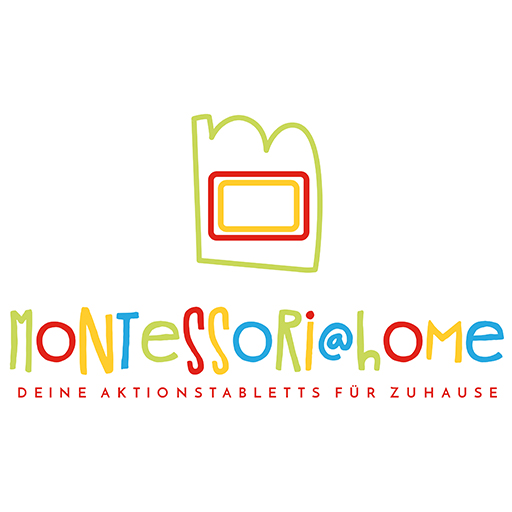3 pieces puzzle
Objective: Promote eye-hand coordination and visual perception
Material: 3 pieces puzzle*
Preparation: Put the puzzle pieces in the basket and place it on the tray on the left. Place the three frames on the right side of the tray.
Execution: The child places the puzzle pieces in the frames provided and thereby promotes his/her hand-eye coordination on the one hand and his/her understanding of shapes on the other. The puzzle pieces are then placed back in the basket.
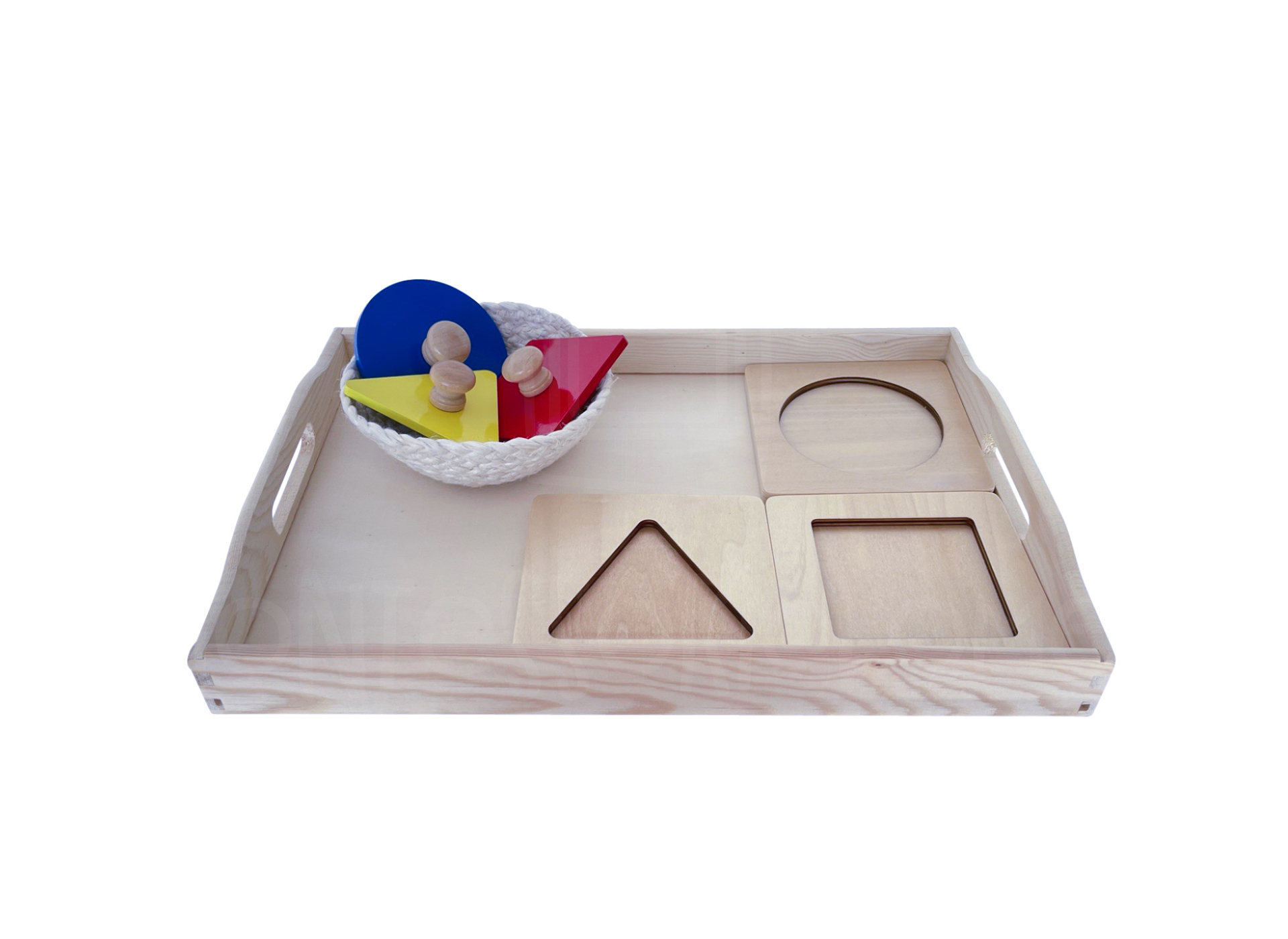
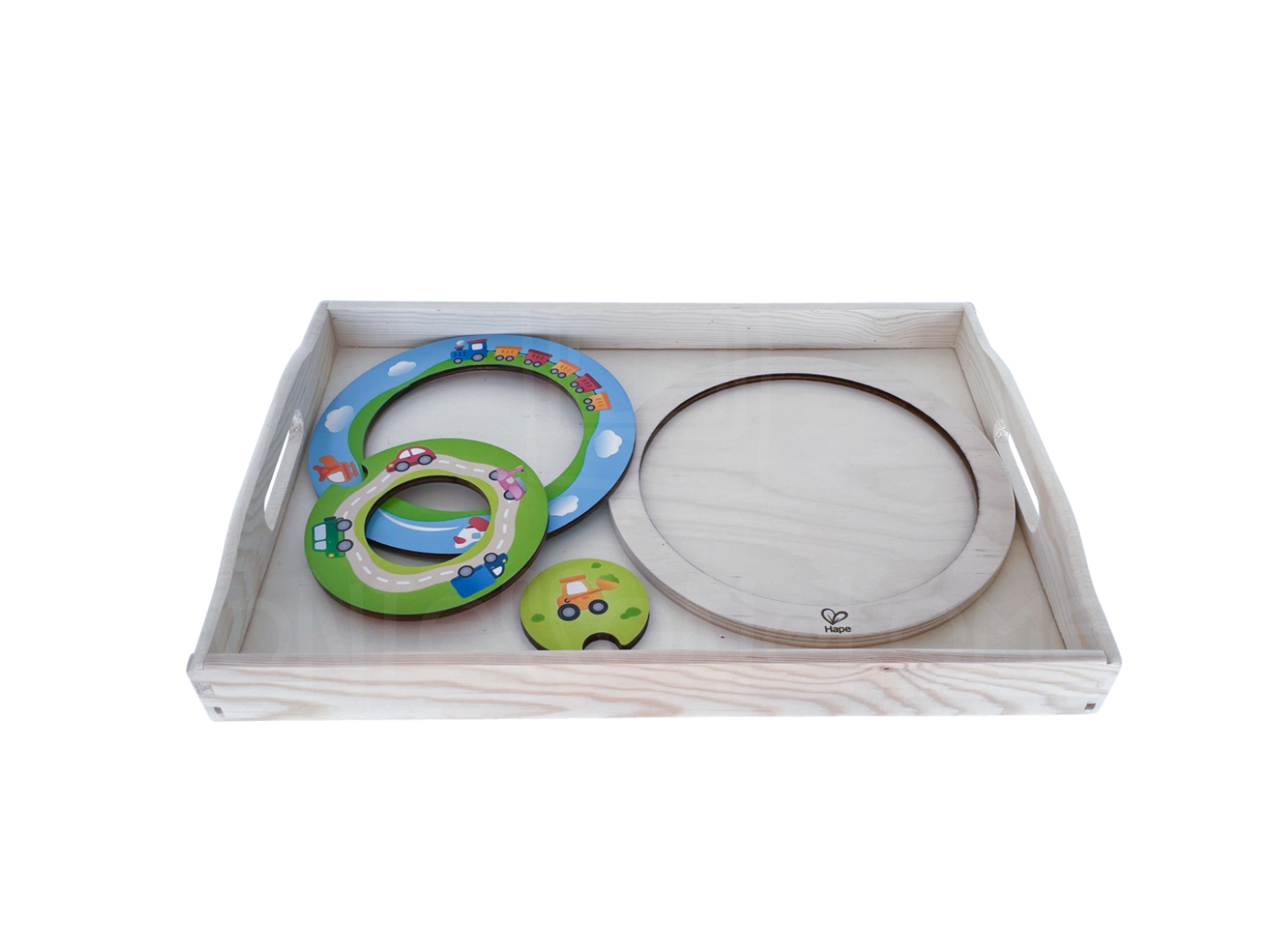
Traffic ring puzzle
Objective: Promote eye-hand coordination and visual perception
Material: Puzzle from Hape*
Preparation: The 3 puzzle pieces are placed on the left side of the tray, the frame to the right.
Execution: The child sorts the 3 puzzle pieces into each other in the frame. Older children turn the pieces of the puzzle to the correct side and puzzle the car together to form a correct picture (this is a two-sided puzzle).
Crossing the midline 1
Objective: Promote eye-hand coordination
Material: horizontal stacking game*
Preparation: The rings are placed on the tray to the left of the horizontal stick.
Execution: The child takes a ring and puts it over the horizontal stick. This is repeated until all the rings are stacked. This process is called “crossing the midline” because the child makes a movement from one side of the body across the midline to the other side of the body.
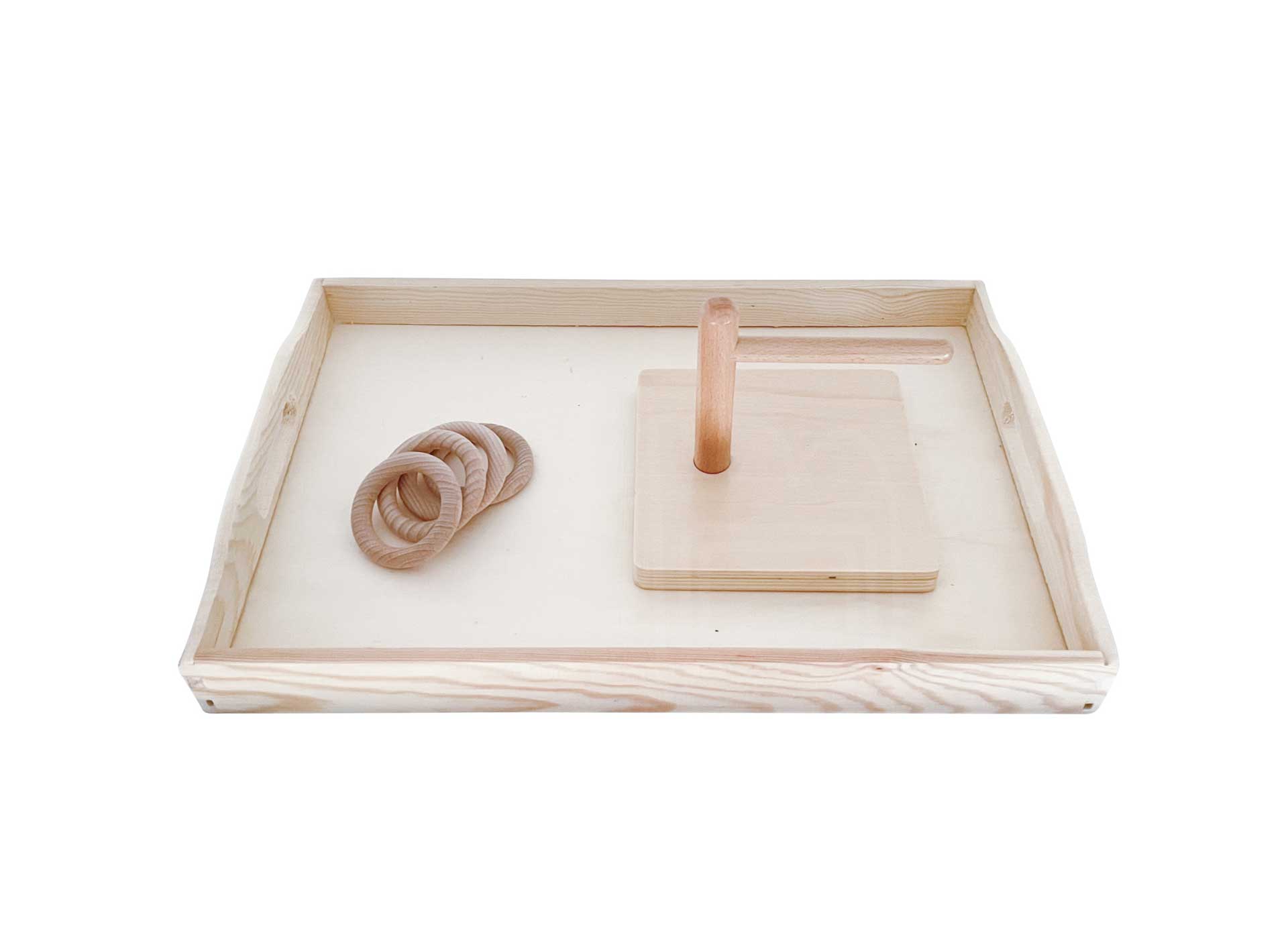
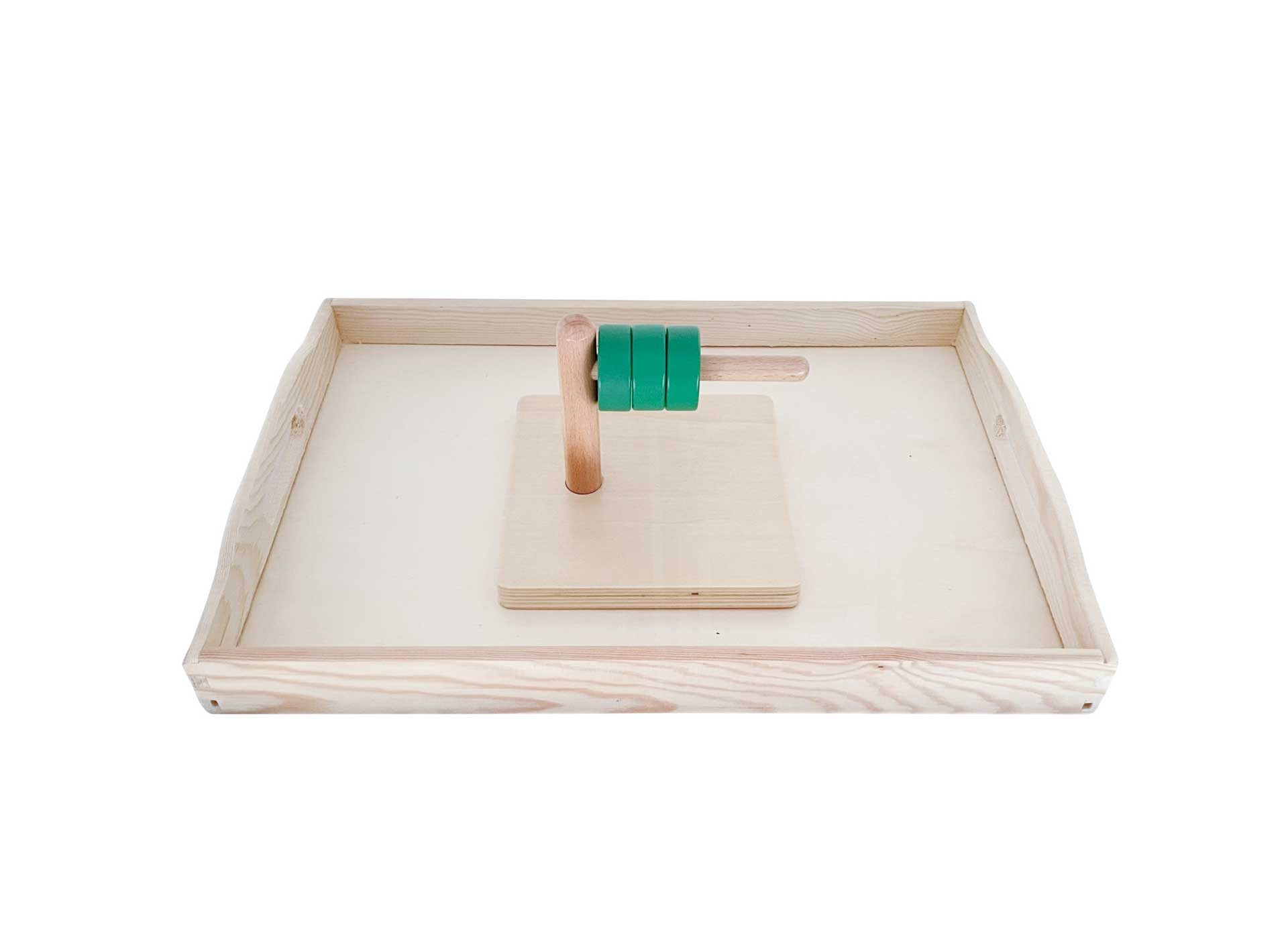
Crossing the midline 2
Objective: Promote eye-hand coordination
Material: horizontal stacking game*
Preparation: The rings are placed on the tray to the left of the horizontal stick.
Execution: After the child has successfully mastered the exercise “Crossing the midline 1”, the green rings provided with a smaller hole can be used instead of the large wooden rings. Again, the child takes a ring and puts it over the horizontal stick. This is repeated until all the rings are stacked.
Opening the lock
Objective: Promote eye-hand coordination and pincer grasp
Material: Lock with key, tear-proof string, wooden ring
Preparation: The key is well attached to the wooden ring with a tear-proof string so that it cannot be swallowed. It is then inserted into the lock and everything is placed together on the tray.
Execution: The child tries to open the lock with the key. Afterwards, an adult helps to close the lock again.
Caution: Since the key is a small part that can be swallowed, please make sure that the key is securely connected to the wooden ring and that the string does not break. It is best to work on this tray together with the child, since the lock must be closed again by an adult at the beginning anyway.
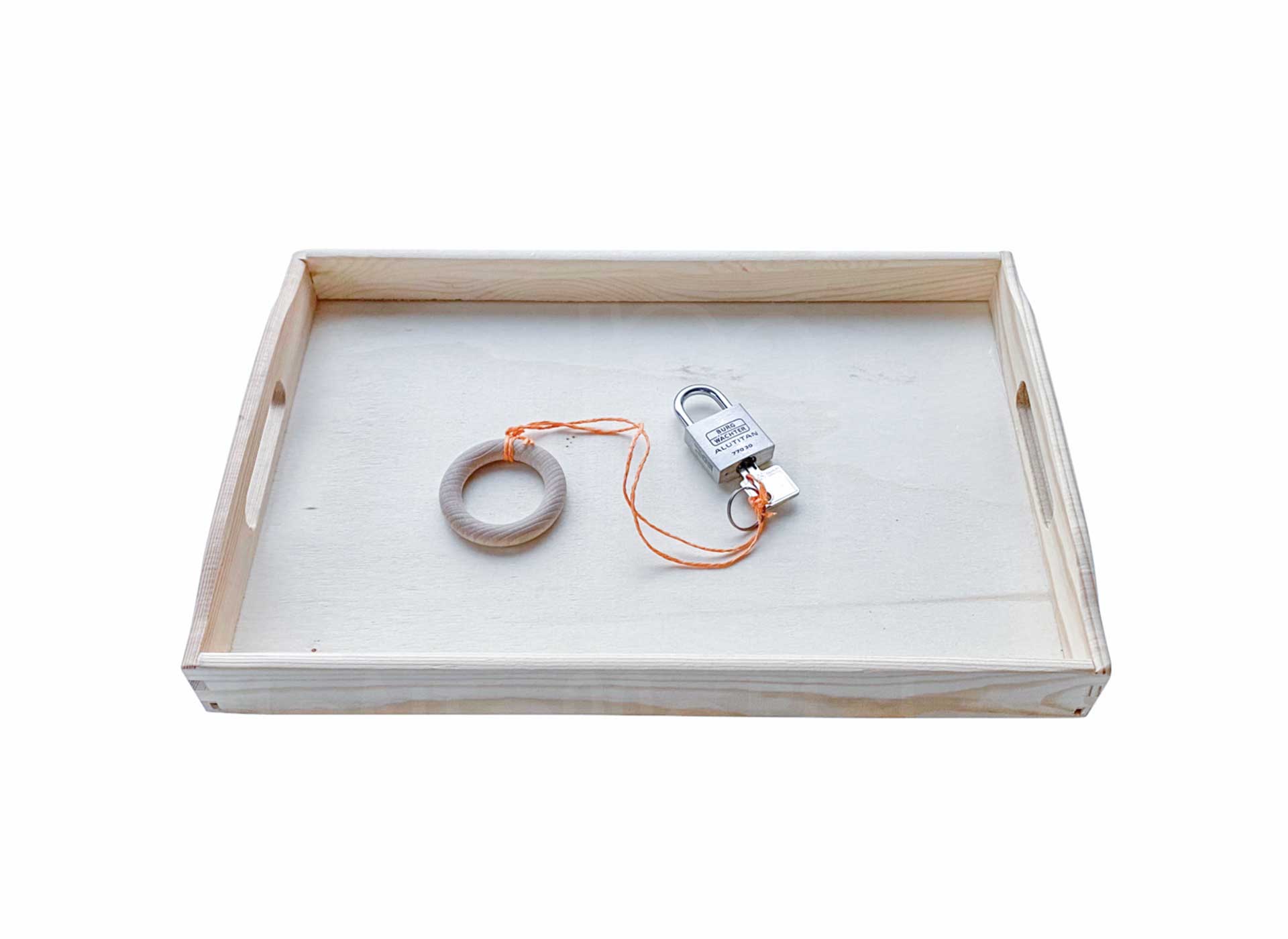
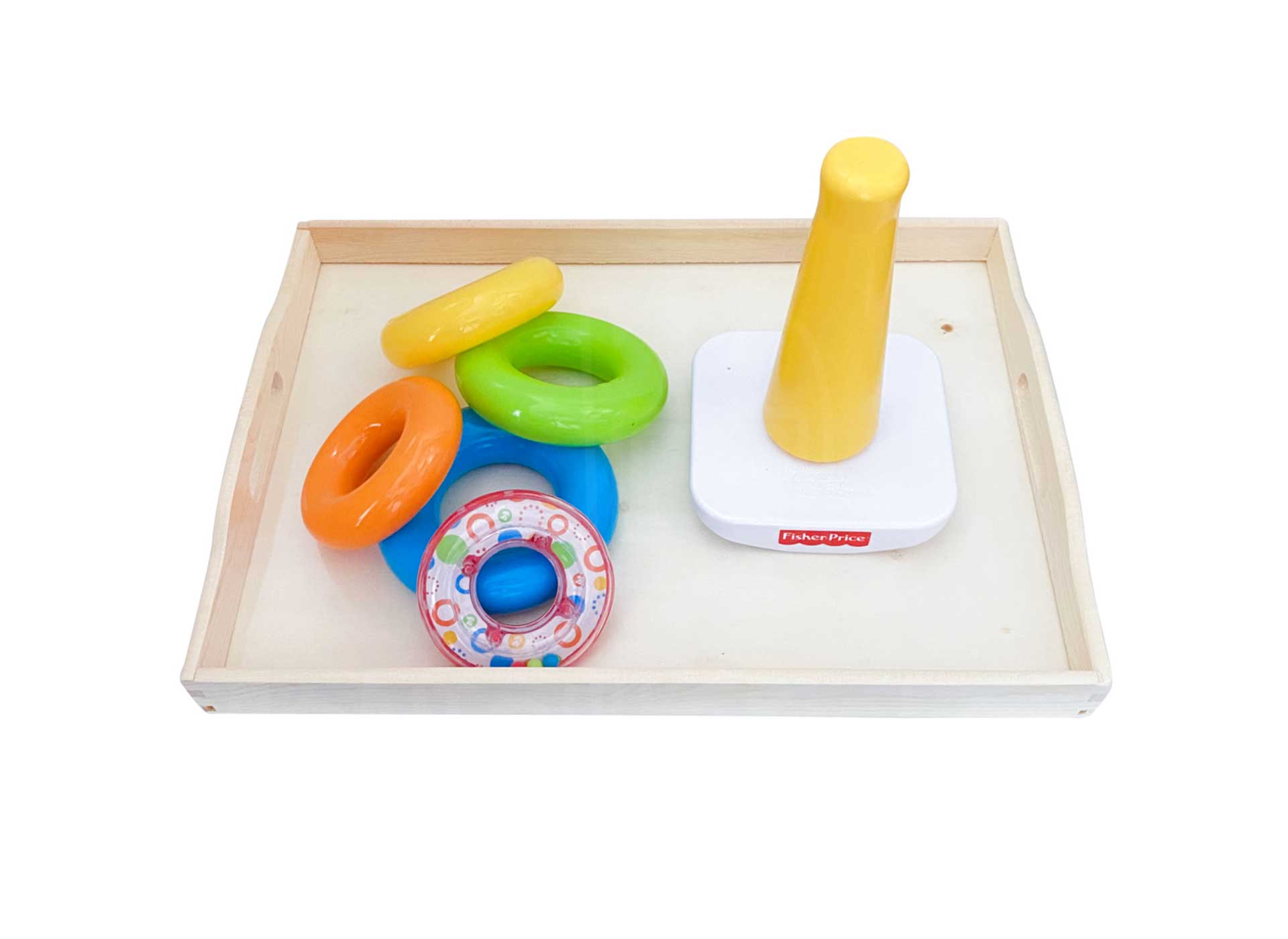
Color ring pyramid
Objective: Promote eye-hand coordination
Material: Color ring pyramid from Fisher Price*
Preparation: The rings are taken from the base element and placed together with it on the tray.
Execution: The child takes the rings and stacks them according to size on the base element. To be successful, this must be done in order of size, otherwise not all of the rings will fit on top. This not only promotes eye-hand coordination but also introduces the concept of different sizes. When the child is finished, the rings are taken down again and everything is put back together on the tray.
Letterbox board
Objective: Promote eye-hand coordination and pincer grasp
Material: Letterbox board with a disc*
Preparation: The disc is placed on the board and the board on a tray or directly in the cupboard.
Execution: The child puts the disc into the opening and the disc disappears behind the board. The child goes to the other side to see where the disc has gone. Playing with two children or child and adult is also possible; the children sit across the wooden board and the disc is then passed back and forth through the opening.
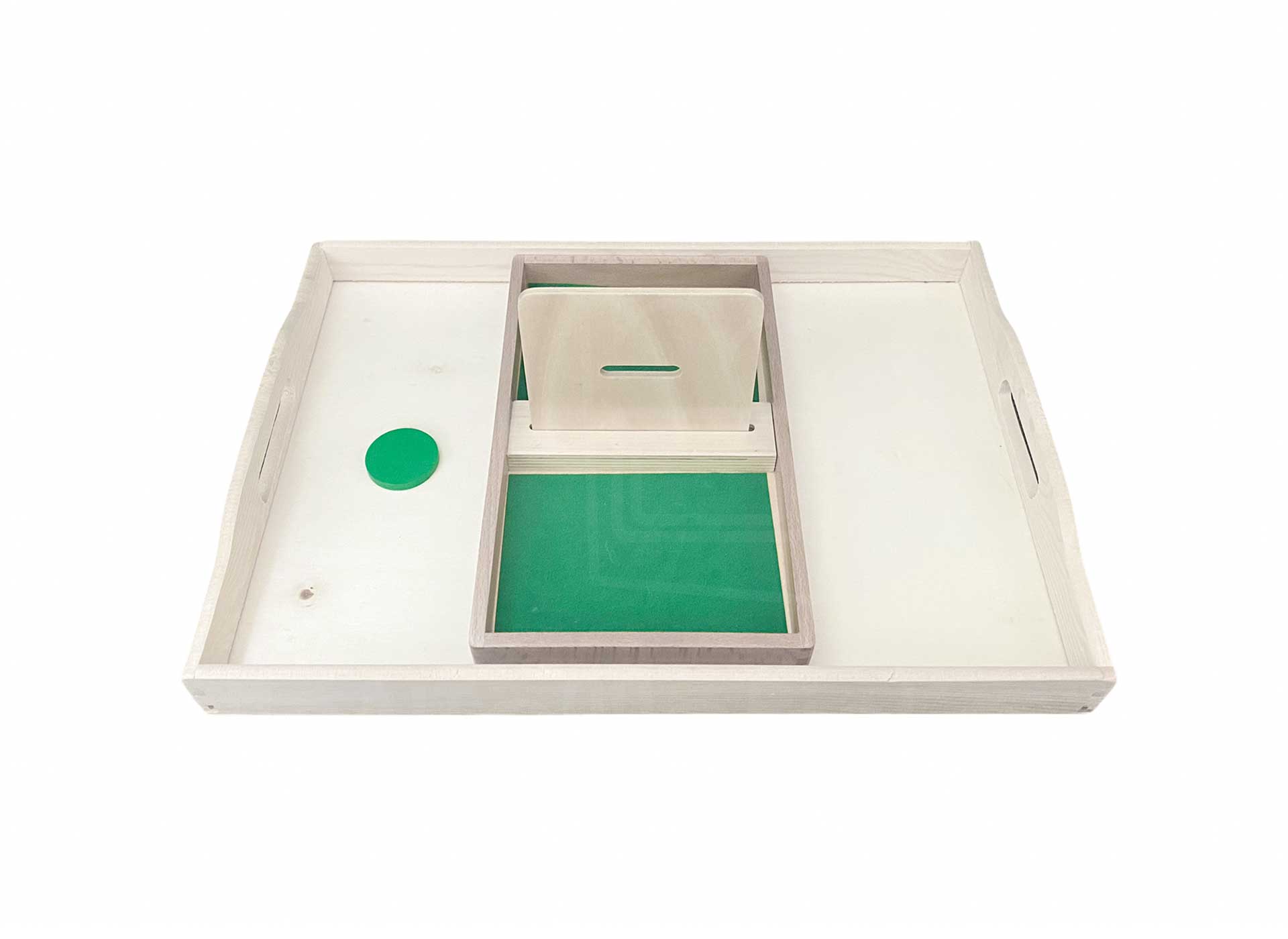
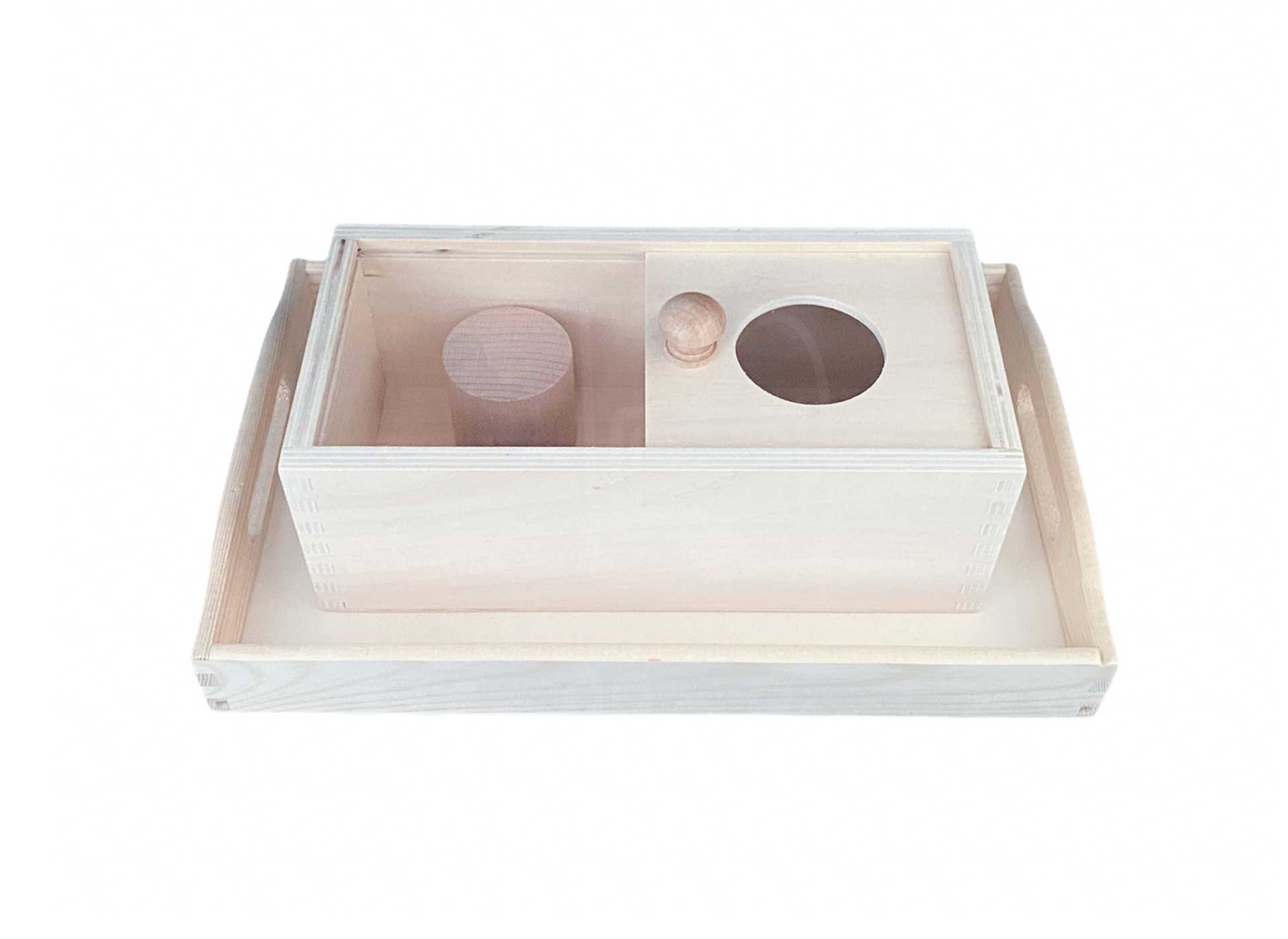
Box with sliding lid
Objective: Promote eye-hand coordination
Material: imbucare box with sliding lid and cylinder*
Preparation: The box with cylinder inside is placed in the cupboard or on a tray and then in the cupboard.
Execution: The child puts the cylinder through the round opening causing the cylinder to disappear into the box. Then the child has to move the lid to get to the cylinder again. Afterwards, the child can put the cylinder through the hole on the other side. In this way, the child learns not only how to improve eye-hand coordination, but also a first step, which is to understand that he or she first has to move the lid in order to get hold of the cylinder again.
Box with drawer
Objective: Promote eye-hand coordination and understanding of sequences
Material: Imbucare box with drawer and ball*
Preparation: The box and the ball are placed on a tray and in the cupboard.
Execution: The child puts the ball into the hole and the ball disappears. Then the child has to open the drawer to get the ball again. But this is not the only learning effect of this exercise, because the child must now close the drawer again before putting the ball in the hole again. If the drawer is not closed beforehand, the drawer will no longer fit into the box because the ball behind it will be in the way. The child must now learn the correct steps to be able to perform the exercise successfully again and again.
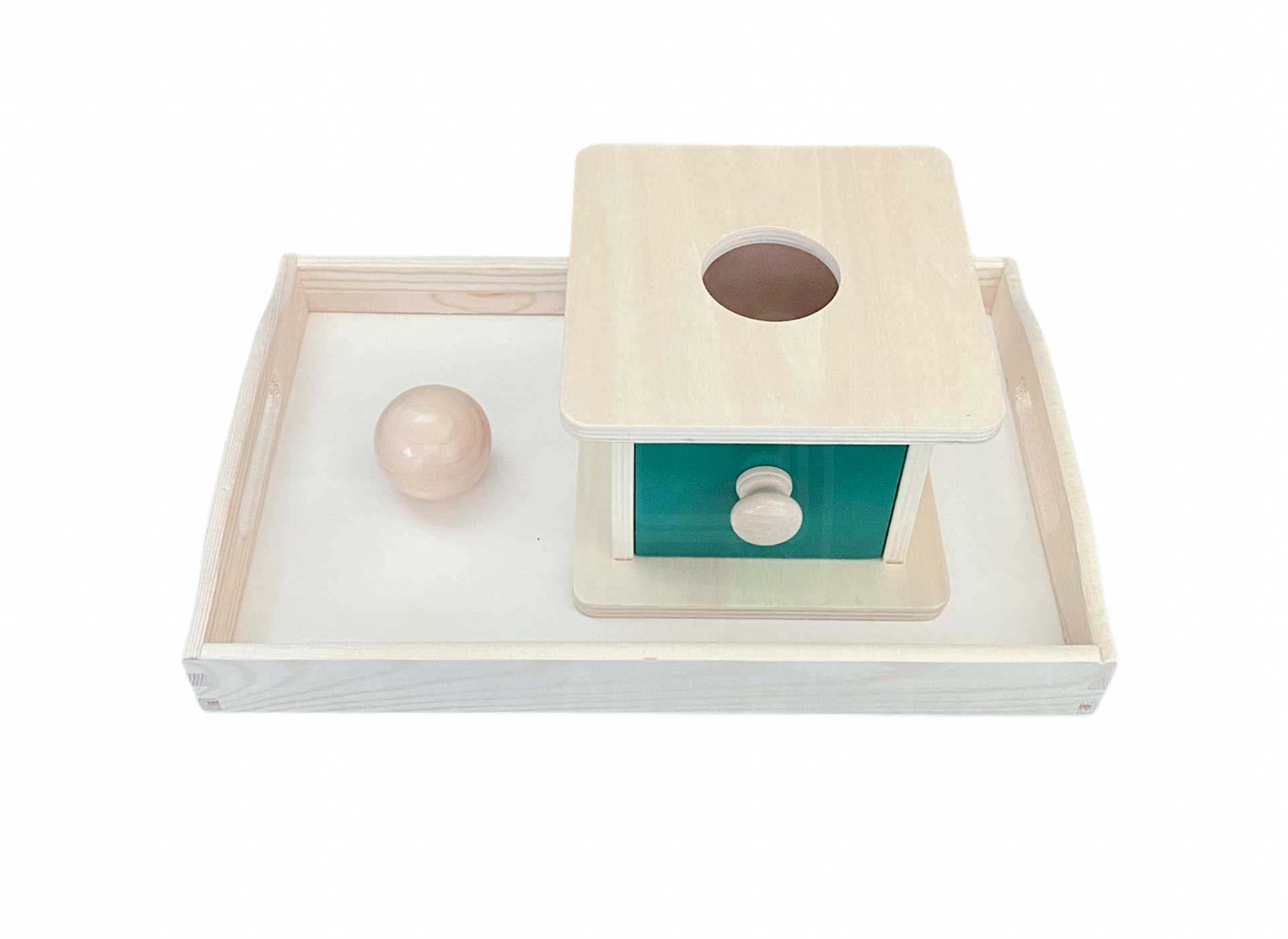
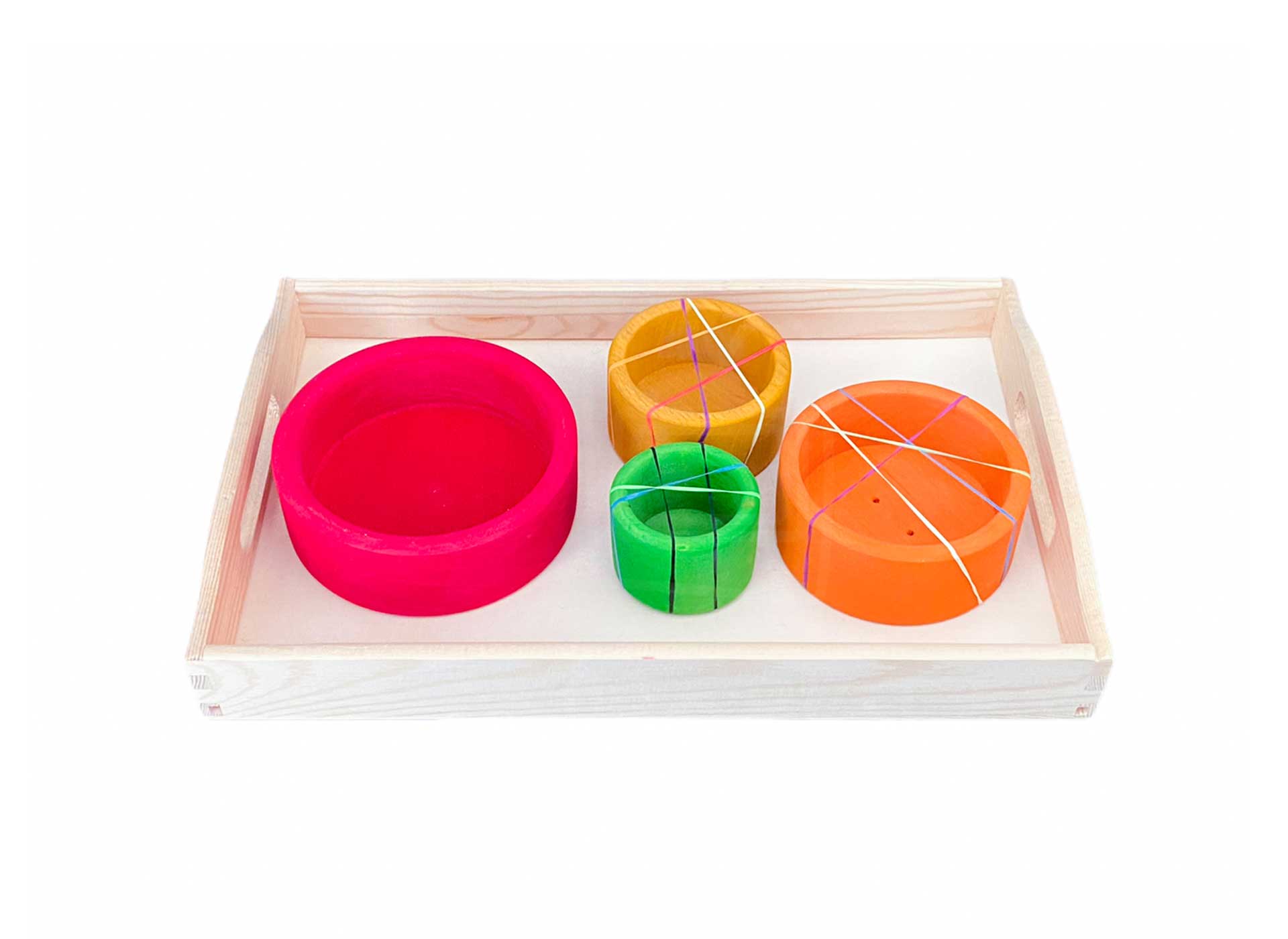
Pulp looms
Objective: Promote fine motor skills and pincer grasp
Material: Grimm’s bowl set*, looms*
Preparation: The ribbons are pulled over the bowls and the bowls are then placed on a tray. One bowl remains empty so that the child can put the unwound hair ties in it.
Execution: The child takes a small bowl and takes down the hair ties. He/she repeats this until all the ribbons have been taken off. The child puts the unwound ribbons into the empty bowl.
Then an adult stretches the tapes over the bowls again.
Caution: This exercise should only be carried out under the supervision of an adult, as the ties are small parts that can be swallowed.
Hit the bird
Objective: Promote eye-hand coordination
Material: Hit the bird* (not the same like on the picture, but with the same functionality)
Preparation: The game is placed on a tray or directly in the cupboard.
Execution: The child takes the hammer and hits the birds. Whenever a bird is knocked down, another one pops up. As soon as the child no longer wants to play, the game is put back on the shelf.
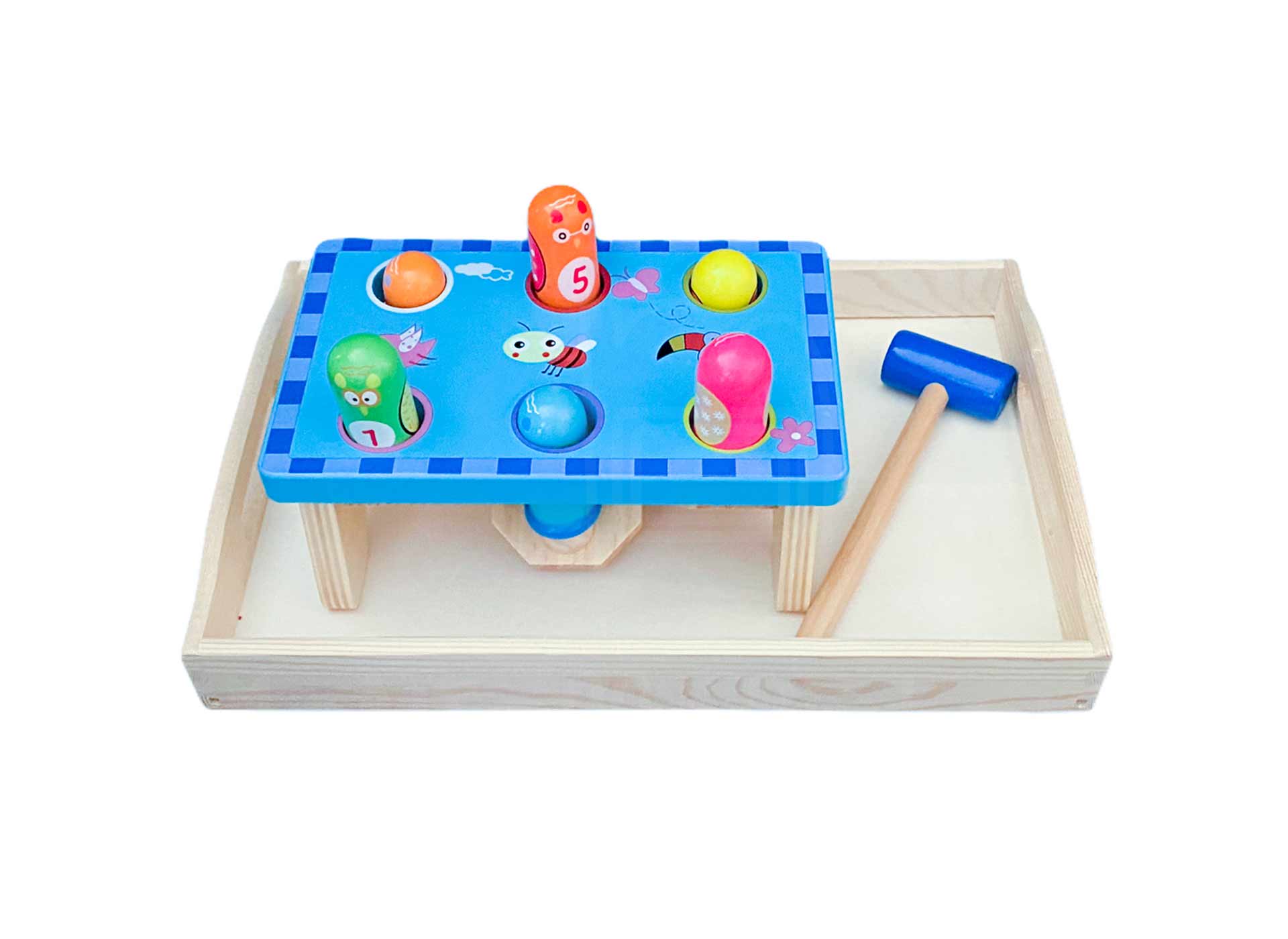
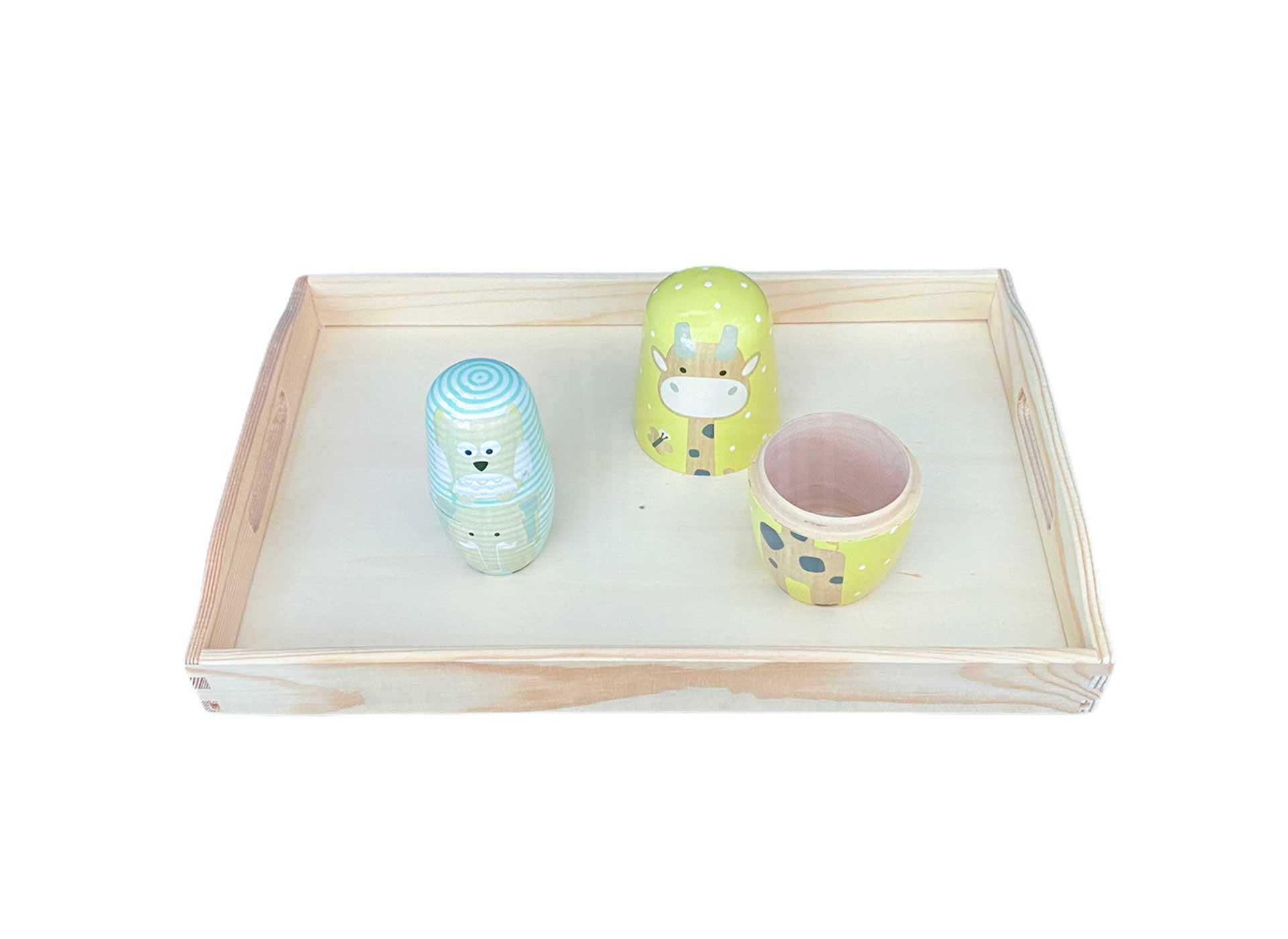
Nesting dolls
Objective: Promote fine motor skills and shape perception
Material: Nesting dolls*
Preparation: The nesting dolls are all assembled into each other and placed on the tray.
Execution: The child opens nesting doll by nesting doll and finds another smaller one to open. When the child is older, he or she will not only disassemble them, but also begin to put them back together. This exercise is not only great for motor skills, but also for size and shape perception.
* Links, welche mit einem Sternchen (*) versehen sind, stellen Amazon Partnerlinks dar (Affiliate-Links / Provisionslinks). Wenn du über diese Links etwas kaufst, erhalten wir eine kleine Provision, denn von etwas müssen wir ja auch leben. Dir entstehen dabei aber keinerlei zusätzlichen Kosten.
